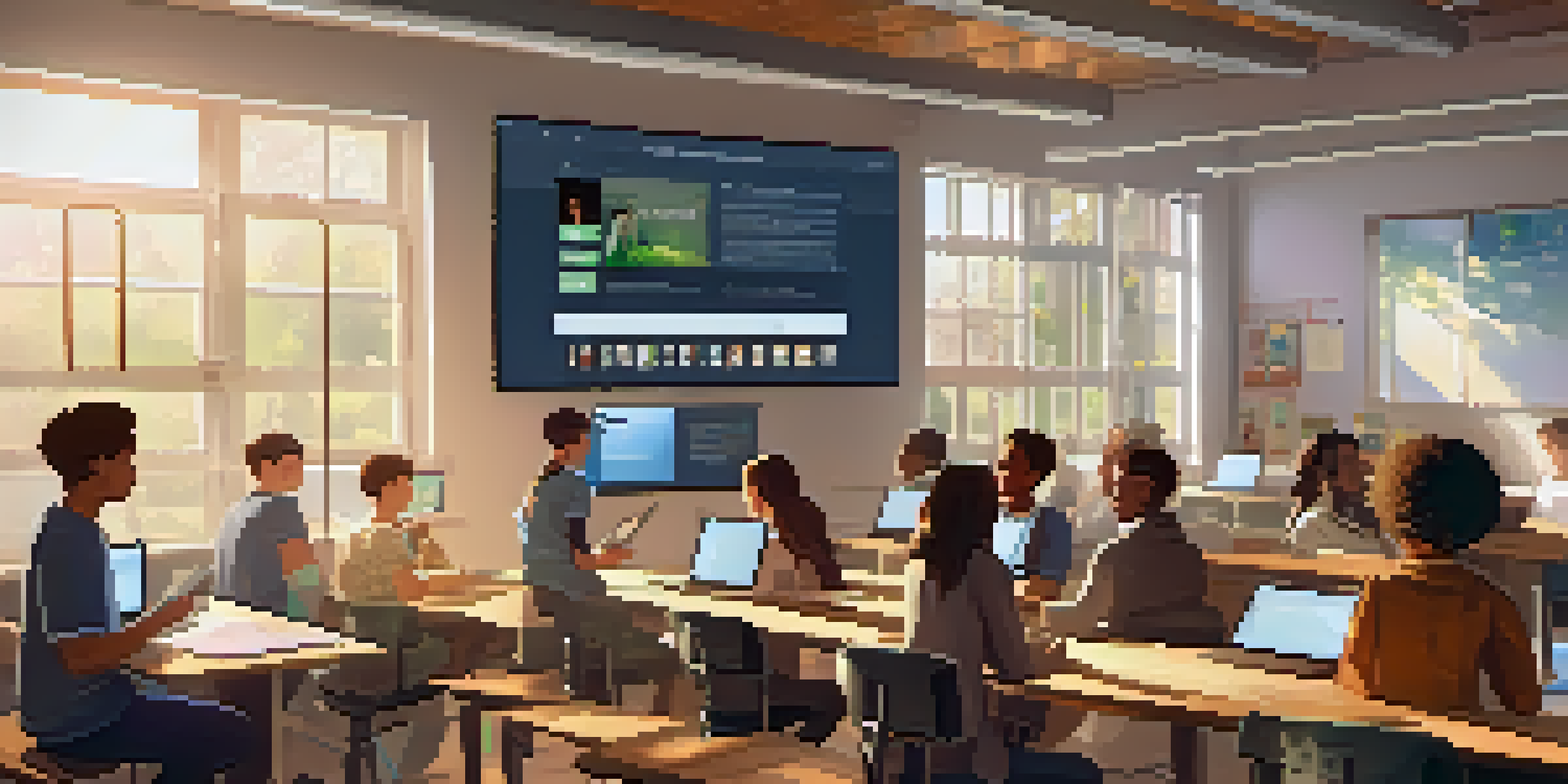Creating a Feedback Culture in Online Learning Communities

Understanding the Importance of Feedback in Learning
Feedback is a crucial element in any learning environment, especially online. It helps learners understand their strengths and areas for improvement, promoting growth. In online learning communities, where face-to-face interaction is limited, feedback becomes even more vital in guiding student progress.
Feedback is the breakfast of champions.
Without regular feedback, students may feel lost or uncertain about their performance. This can lead to disengagement or frustration. By establishing a culture of feedback, educators can create a supportive atmosphere where students feel valued and motivated to improve.
Moreover, feedback fosters a sense of community among learners. When students share their thoughts and experiences, they not only learn from their instructors but also from each other, enriching the overall learning experience.
Creating a Safe Space for Feedback
For feedback to be effective, it’s essential to create a safe and welcoming space. Students should feel comfortable sharing their thoughts without fear of harsh judgment. Establishing ground rules that promote respect and constructive criticism can help achieve this goal.

Encouraging anonymity in feedback can also alleviate fear. Tools like surveys or anonymous feedback forms allow students to express their opinions freely. When learners know their voices will be heard without repercussions, they are more likely to engage honestly.
Feedback Enhances Learning Growth
Regular feedback helps students identify their strengths and areas for improvement, fostering a culture of continuous growth.
Additionally, demonstrating vulnerability as an instructor can encourage students to do the same. Sharing personal experiences of receiving feedback can humanize the process and show that everyone, including educators, is on a journey of growth.
Encouraging Peer-to-Peer Feedback
Peer feedback is a powerful tool in online learning communities. It not only enhances the learning experience but also builds collaboration and communication skills among students. Encouraging learners to provide feedback to each other can deepen their understanding of the material.
Mistakes should be examined, learned from, and discarded; not dwelled upon and stored.
To facilitate this, structured peer review sessions can be organized. Pairing students or creating small groups can help them provide focused, constructive feedback. Clear guidelines on what to look for can also make the process smoother and more effective.
Moreover, recognizing the value of peer feedback reinforces its importance. Highlighting success stories of students who improved through peer feedback can motivate others to participate actively in the process.
Utilizing Technology for Feedback
In the digital age, technology offers innovative ways to gather and provide feedback. Learning management systems (LMS) often come equipped with tools to facilitate feedback, such as comment features and grading rubrics. Leveraging these tools can streamline the feedback process.
Moreover, interactive platforms like forums and chat apps allow for real-time feedback. Students can ask questions and receive immediate responses, creating a dynamic learning environment. This immediacy can enhance understanding and retention of information.
Safe Spaces Boost Honest Feedback
Creating a welcoming environment where students feel comfortable sharing their thoughts encourages honest and constructive feedback.
Additionally, incorporating multimedia feedback, such as video or audio comments, can make the process more engaging. Personalized feedback in various formats can cater to different learning styles, making the experience richer and more effective.
Setting Clear Expectations for Feedback
To foster a productive feedback culture, setting clear expectations is crucial. Students should know when and how feedback will be provided, as well as what is expected of them in return. This clarity helps manage anxiety and builds accountability among learners.
Creating a feedback schedule can be beneficial. Regular check-ins or specific feedback intervals can help students anticipate and prepare for feedback sessions. Knowing what to expect can reduce uncertainty and encourage active participation.
Furthermore, providing examples of good feedback can guide students in their responses. Sharing rubrics or showcasing exemplary feedback can help students understand the quality and type of feedback that is most useful.
Fostering a Growth Mindset Through Feedback
A growth mindset is the belief that abilities and intelligence can be developed through dedication and hard work. Encouraging this mindset is essential in online learning, and feedback plays a significant role in nurturing it. When feedback is framed positively, it promotes resilience and a willingness to learn from mistakes.
By emphasizing progress rather than perfection, educators can help students view feedback as a tool for improvement. Creating opportunities for reflection on feedback can also reinforce this mindset, enabling students to see how they can grow over time.
Technology Streamlines Feedback Process
Leveraging digital tools allows for innovative and immediate feedback, enhancing student engagement and understanding.
Celebrating small victories and improvements can further enhance this growth mindset. Recognizing effort and progress can motivate students to embrace challenges and seek feedback as a valuable resource in their learning journey.
Evaluating the Impact of Feedback Culture
To ensure the feedback culture is effective, regular evaluation is necessary. Gathering feedback from students about the feedback process itself can provide insights into what is working and what needs improvement. This practice not only demonstrates the value of feedback but also engages students in the continuous improvement process.
Utilizing surveys or informal discussions can help gauge students' perceptions of the feedback culture. Understanding their experiences can guide adjustments to enhance the process, making it more inclusive and effective.

Lastly, measuring student outcomes associated with feedback can provide concrete evidence of its impact. Tracking improvements in student performance can highlight the benefits of a robust feedback culture, encouraging its ongoing development in online learning communities.